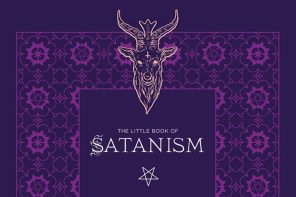Since the Manson Murders of 1969, the figure of the “Satanic teenage murderer” has held a place of horror and fascination in the American consciousness. Last week this figure returned to haunt our media in the form of two gruesome murders.
In Houston, a pair of teenage boys murdered a 15-year-old girl and told authorities it was part of ritual to strike a Faustian pact with Satan, while in Sudbury, Pennsylvania, confessed teenage murderer Miranda Barbour announced last week that she was “a high ranking official in the Satanic world” and had murdered at least 22 people before losing count of her victims.
While we don’t have all of the facts, it seems highly unlikely that these murders are related to organized Satanism and that claims of Satanic involvement may be the product of police interrogation. It goes without saying that these are tragic cases, though it will be even more tragic if—in our rush to slake the American appetite for horror—we once again beat the drums of Satanic Panic instead of asking harder questions about why these murders happened.
Assuming these teenage murderers were not following prescribed rituals for human sacrifice or in contact with networks of criminal Satanists, why would they tell such stories? Why did the Houston case have the disturbing feature of an inverted cross?




